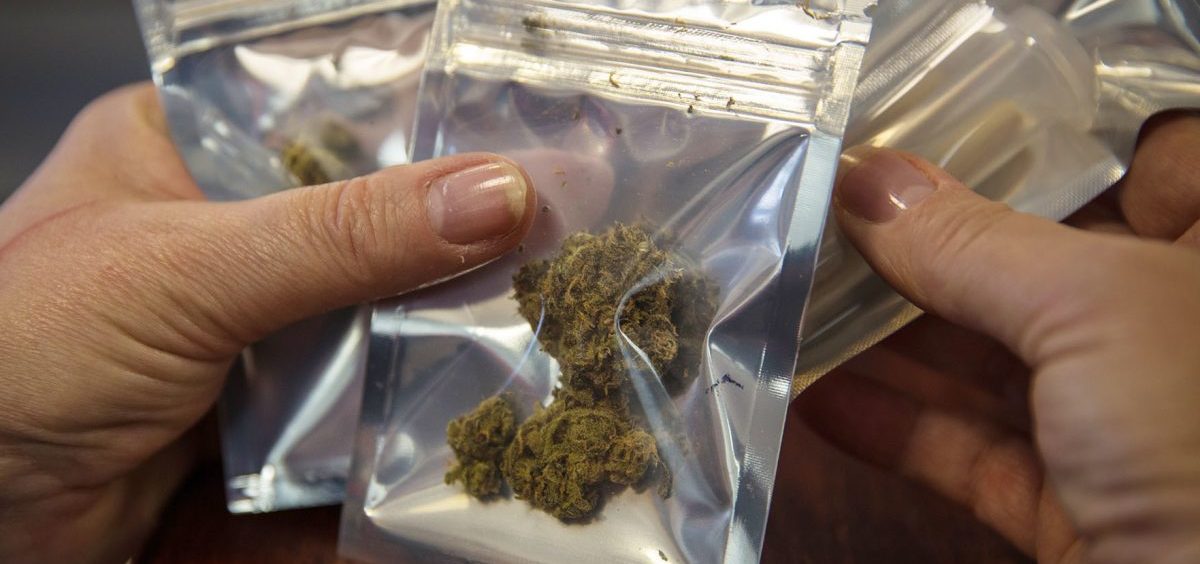News

Opioid Use Lower In States That Eased Marijuana Laws
By: Richard Harris | NPR
Posted on:
Medical marijuana appears to have put a dent in the opioid abuse epidemic, according to two studies published Monday.
The research suggests that some people turn to marijuana as a way to treat their pain, and by so doing, avoid more dangerous addictive drugs. The findings are the latest to lend support to the idea that some people are willing to substitute marijuana for opioids and other prescription drugs.
Many people end up abusing opioid drugs such as oxycodone and heroin after starting off with a legitimate prescription for pain. The authors argue that people who avoid that first prescription are less likely to end up as part of the opioid epidemic.
“We do know that cannabis is much less risky than opiates, as far as likelihood of dependency,” says W. David Bradford, a professor of public policy at the University of Georgia. “And certainly there’s no mortality risk” from the drug itself.”
The National Academy of Sciences, Engineering and Medicine says there’s good evidence that cannabis is effective at treating pain for some conditions. So Bradford and three colleagues — including his scientist daughter — decided to see whether people who can get easy access to medical marijuana are less likely to get prescription opioids. The answer, they report in JAMA Internal Medicine, is yes.
“There are substantial reductions in opiate use” in states that have initiated dispensaries for medical marijuana, he says.
The researchers studied data from Medicare, which mostly covers people over the age of 65. (It was a convenient set of data and available to them at no cost). They found a 14 percent reduction in opioid prescriptions in states that allow easy access to medical marijuana.
They estimate that these dispensary programs reduced the number of opioid prescriptions by 3.7 million daily doses. States that allowed homegrown marijuana for medical use saw an estimated 1.8 million fewer pills dispensed per day. To put that in perspective, from 2010 to 2015 Medicare recipients received an average of 23 million daily doses of opioids, the researchers say.
Because opioid use nationwide was rising during the study period, their estimate of reduced uses reflects a slowing of the increase, rather than an actual decline in opioid use in these states, Bradford says.
The analysis found a correlation and can’t prove that marijuana use led to a reduction in the growth of opioid use. There might be other factors at work.
Even so, the findings suggests that expanding access to medical marijuana could help ease the opioid epidemic.
Hefei Wen at the University of Kentucky College of Public Health was lead author on another study in the same journal that reached similar conclusions. Wen, with Jason Hockenberry at Emory University, used Medicaid data. Medicaid is primarily a health insurance program for low-income people.
The authors write that laws that permit both medical marijuana and recreational marijuana for adults “have the potential to reduce opioid prescribing for Medicaid enrollees, a segment of population with disproportionately high risk for chronic pain, opioid use disorder and opioid overdose. Nevertheless, marijuana liberalization alone cannot solve the opioid epidemic.”
Bradford agrees that medical marijuana laws could have a role to play. “But it is not without risks,” he says. “Like any drug in our FDA-approved pharmacopeia, it can be misused. There’s no question about it. So I hope nobody reading our study will say ‘Oh, great, the answer to the opiate problem is just put cannabis in everybody’s medicine chest and we are good to go.’ We are certainly not saying that.”
One concern is marijuana use might encourage people to experiment with more dangerous drugs. Dr. Mark Olfson, a professor of psychiatry and epidemiology at Columbia University, authored a study that found marijuana users were six times more likely than nonusers to abuse opioids.
“A young person starting marijuana is maybe putting him — or herself at increased risk,” Olfson says. “On the other hand there may be a role — and there likely is a role — for medical marijuana in reducing the use of prescribed opioids for the management of pain.”
This is a question of balancing risks and benefits. And that’s difficult to do with the current studies based on broad populations — and in this case, populations that are not representative of the at-risk population as a whole.
Olfson says what they really need is studies that follow individuals, to see whether marijuana use really does supplant opioids. It’s hard to do study in this area because the federal government regards marijuana as a very dangerous drug and puts tight controls on research.
“That does make this a difficult area to study, and that’s unfortunate because we have a large problem with the opioid epidemic,” Olfson says “And at the same time, with an aging population, we have lots of people who have pain conditions and who will benefit from appropriate management.”
9(MDI4ODU1ODA1MDE0ODA3MTMyMDY2MTJiNQ000))

